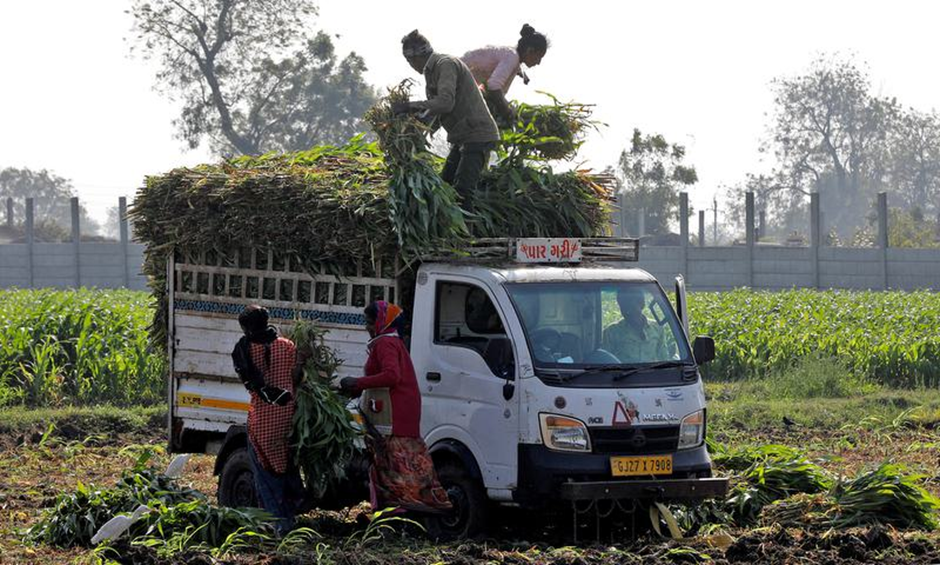- Courses
- GS Full Course 1 Year
- GS Full Course 2 Year
- GS Full Course 3 Year
- GS Full Course Till Selection
- Answer Alpha: Mains 2025 Mentorship
- MEP (Mains Enrichment Programme) Data, Facts
- Essay Target – 150+ Marks
- Online Program
- GS Recorded Course
- Polity
- Geography
- Economy
- Ancient, Medieval and Art & Culture AMAC
- Modern India, Post Independence & World History
- Environment
- Governance
- Science & Technology
- International Relations and Internal Security
- Disaster Management
- Ethics
- NCERT Current Affairs
- Indian Society and Social Issue
- NCERT- Science and Technology
- NCERT - Geography
- NCERT - Ancient History
- NCERT- World History
- NCERT Modern History
- CSAT
- 5 LAYERED ARJUNA Mentorship
- Public Administration Optional
- ABOUT US
- OUR TOPPERS
- TEST SERIES
- FREE STUDY MATERIAL
- VIDEOS
- CONTACT US
Ethanol push turns India into corn importer
Ethanol push turns India into corn importer
08-09-2024

India appears set to become a permanent net importer of corn with the government promoting ethanol in gasoline to reduce carbon emissions; this has pushed ethanol distilleries to start using domestic corn produce, which has traditionally been absorbed by the poultry and starch industries
Key Facts About Maize
-
About Maize:
- Scientific Name: Zea mays L.
- Versatility: Known as the "queen of cereals" due to its high genetic yield potential and wide range of uses in food, animal feed, and industrial products.
- Global Production: The USA is the leading producer, with high productivity levels.
- Indian Contribution: Maize is the third most important food crop in India, contributing about 9% to the national food basket and adding over Rs. 100 billion to the agricultural GDP.
-
Growing Conditions:
- Soil Types: Thrives in loamy sand to clay loam soils; optimal growth in well-drained soils with high organic matter and neutral pH.
- Avoid: Poorly drained and saline soils to maintain productivity.
- Rainfall: Requires 50-100 cm of rainfall.
-
Seasonal Cultivation:
- Growing Seasons: Can be cultivated in Kharif, Rabi, and Spring seasons. Kharif maize typically has lower productivity compared to Rabi maize due to rainfed conditions and biotic/abiotic stresses.
- Global Ranking:
- Production: India is the 5th largest producer of maize (as of December 2023).
- Export: India was the 14th largest exporter of maize in 2022.
-
Major Producing States:
- Karnataka, Madhya Pradesh, Bihar, Tamil Nadu, Telangana, Maharashtra, Andhra Pradesh.
-
Initiatives:
-
National Food Security Mission (NFSM)
-
Waxy Maize Hybrid
-
All India Coordinated Maize Improvement Project (AICMIP)
-
India Maize Summit 2022
-
Why Has India Become a Net Maize Importer?
-
Ethanol Blending Goals:
- Target: Increase ethanol content in gasoline to 20% by 2025-26.
- Policy: The National Policy on Biofuels (NPB) 2018 promotes blending of maize-based ethanol, enhancing production capacities.
- Shift from Sugarcane to Maize:
- Drought Impact: A drought led to reduced sugarcane availability for ethanol, shifting the focus to maize.
- Production Increase: India produced 34.6 million tonnes of maize in 2023-24, with plans to double production to meet demand.
-
Impact on Domestic Supply:
- Shortfall: Increased ethanol production has caused shortages in poultry and starch industries, leading to maize imports for the first time in decades.
How Is Excess Import of Maize Impacting Local Industries?
-
Competition for Maize:
- Industry Impact: Poultry and starch industries face competition from ethanol producers for maize supplies.
-
Soaring Maize Prices:
- Price Increase: Demand surge has driven local maize prices above global levels, impacting poultry producers who rely heavily on maize for feed.
-
Poultry Industry Strain:
- Cost Issues: Rising feed costs have put poultry growers in financial distress, prompting calls for the removal of import duties and approval of GM maize for feed.
- Production Costs: High costs threaten the sustainability of poultry farming. Small-scale farmers are using alternative feed sources.
-
Incentives for Corn Cultivation:
- Increased Acreage: High maize prices are encouraging farmers to expand maize cultivation. Area under summer-sown maize rose by 7% from 2023.
- Farmer Benefits: Farmers are currently benefiting from high prices, while poultry producers are scaling back until new season supplies stabilize prices.
Global Implications of India’s Excess Import of Maize
-
Shift in Trade Dynamics:
- Import Trends: India’s shift from exporter to importer affects global maize prices, which had been trading at near four-year lows.
- Sources: India is importing maize from Myanmar and Ukraine.
-
Increased Prices in Exporting Countries:
- Price Surge: Indian demand has pushed maize prices in Myanmar from USD 220 to around USD 270 per metric ton.
- Domestic Challenges: Rising costs are straining industries in exporting countries that have relied on affordable maize supplies.
-
Supply Chain Adjustments:
- Alternative Sources: Traditional buyers of Indian maize, like Vietnam, Bangladesh, Nepal, and Malaysia, are now sourcing from South America and the US due to high Indian maize prices.
-
Permanent Importer Status:
- Future Projections: NITI Aayog forecasts that India’s ethanol production capacity needs to grow to meet the demand of 1,016 crore litres for EBP by 2024-25.
- Long-term Imports: With rising demand, India is expected to remain a net importer of maize, as domestic production may not keep pace with the increased ethanol production requirements.
Steps Needed to Enhance Maize Production in India
- Technological Adoption:
- Biotech Traits: Adoption of pest-resistant biotech traits and high-yielding hybrids can enhance maize productivity.
- Yield Comparison: The US achieves yields of over 11 tonnes per hectare, while India’s average yield is 3.3-3.8 tonnes per hectare, suggesting significant potential for improvement.
- Diversification and Intensification:
- Resource Conservation: Switching from water-intensive rice to maize in irrigated areas can conserve resources and boost production.
- Efficiency: Maize requires less power and water compared to rice, making it a viable alternative for water-scarce regions.
- Government Support:
- Production Targets: To meet the E20 blending target, India needs to increase maize production from 346 lakh tonnes to 420-430 lakh tonnes by 2024-25, and further to 640-650 lakh tonnes by 2029-30.
- Incentives: Offering a reasonable MSP, procurement assurances, and transportation subsidies can encourage farmers to boost maize cultivation.
- Cooperative Engagement: Involving mega cooperatives in the maize value chain can replicate the success seen in the White Revolution.
- Poultry and Animal Feed:
- Multigrain Use: Maize can be used more broadly as a multigrain cereal, supporting poultry and animal feed needs.
- DDGS Production: High-protein distiller’s dried grains with soluble (DDGS) from ethanol production can supplement feed, meeting both food and fuel security needs.
Conclusion
India’s transition to a net importer of maize reflects a significant shift in agricultural and energy policies, driven by increased ethanol production. While this change impacts local industries and global supply chains, addressing technological, economic, and policy-related challenges can enhance domestic maize production and ensure food, feed, and fuel security in the future.




